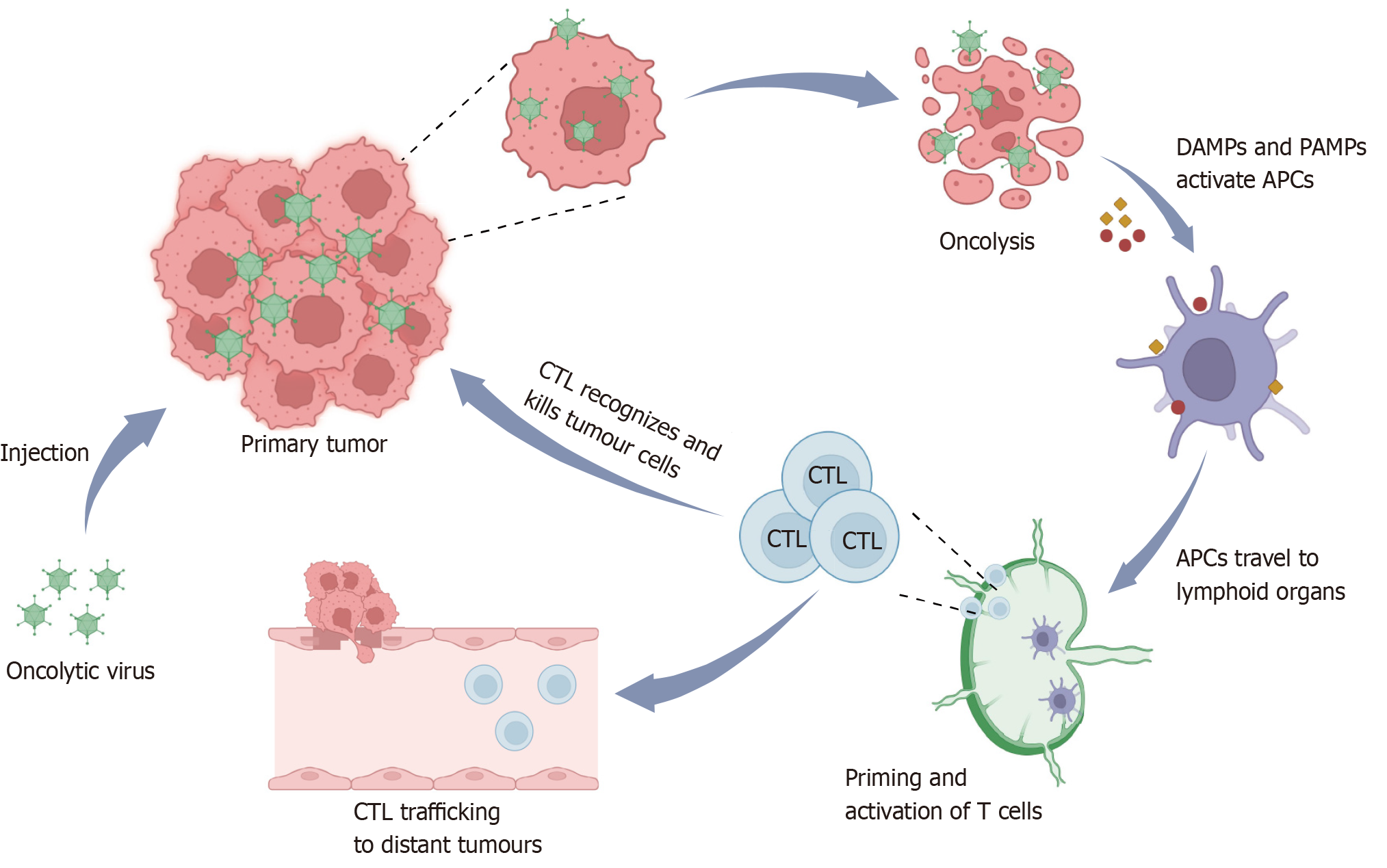Copyright
©The Author(s) 2024.
World J Gastrointest Oncol. Jul 15, 2024; 16(7): 2867-2876
Published online Jul 15, 2024. doi: 10.4251/wjgo.v16.i7.2867
Published online Jul 15, 2024. doi: 10.4251/wjgo.v16.i7.2867
Figure 1 Oncolytic virus promotes both regional and systemic anti-tumor activity.
Following viral infection of tumor cells, the virus replicates proficiently within the cell, and after lysis of tumor cells, the soluble tumor-associated antigens, viral pathogen-associated molecular models, and cell-derived damage-associated molecular models release recruits and activates antigen-presenting cells (APCs). APC then migrates to the lymph nodes and initiates adaptive T cell immunity to the tumor. These cytotoxic T cells identify and destroy proximal or distal tumor cells. CTL: Cytotoxic T cell; APC: Antigen-presenting cell; DAMP: Derived damage-associated molecular model; PAMP: Pathogen-associated molecular models.
- Citation: Xiao R, Jin H, Huang F, Huang B, Wang H, Wang YG. Oncolytic virotherapy for hepatocellular carcinoma: A potent immunotherapeutic landscape. World J Gastrointest Oncol 2024; 16(7): 2867-2876
- URL: https://www.wjgnet.com/1948-5204/full/v16/i7/2867.htm
- DOI: https://dx.doi.org/10.4251/wjgo.v16.i7.2867









